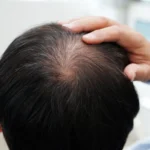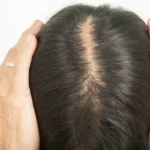Liposuction

Liposuction is a popular surgical procedure, offering patients the possibility of a more sculpted physique by removing stubborn fat deposits. However, understanding the intricacies of this procedure is important for anyone considering it.
Liposuction - 5 Things to Know
Here are five things to know about liposuction, including insights on safety, techniques, and expectations.
1. Liposuction is a Surgical Procedure with Specific Safety Considerations
Despite the common misconception that liposuction is a minor procedure due to the small size of the incisions involved, it is actually a surgical operation. The procedure involves making small incisions, typically around 0.5 cm in diameter, through which thin, blunt cannulas are inserted to suction out fat.
While these incisions are small, the introduction of these metal tubes into the body requires careful precision. Misplacement of the cannula or aggressive suctioning can lead to injury.
In Singapore, liposuction is generally performed in a Ministry of Health (MOH) certified day surgery facility. This environment ensures that the procedure is carried out with all necessary safety precautions, with appropriate measures in place to handle any complications that may arise.
2. Local Anaesthesia Under Awake Conditions: A Preferred Method
When it comes to administering anaesthesia for liposuction, the choice of technique can significantly impact both safety and recovery.
My preference is to perform the procedure under awake conditions using local anaesthesia. This involves injecting a numbing solution into the fat layer, effectively numbing only the targeted area.
There are distinct advantages to this method. Firstly, if the suction cannula happens to be inserted too deeply, the patient will experience pain, which serves as an immediate alert for me to correct the position and prevent any potential injury.
This real-time feedback helps ensure that the procedure remains safe and minimises the risk of complications.
3. Enhanced Techniques: Ultrasound and Vibration for Better Results
Advancements in liposuction technology have led to the development of various techniques designed to improve the efficiency and outcomes of the procedure.
One notable method involves using ultrasound or vibration to emulsify fat before it is suctioned out.
This technique can be likened to turning butter into whipped cream — by melting the fat, it becomes easier to remove, resulting in a more thorough and effective fat removal procedure.
4. Liposuction Targets Fat, but Doesn’t Eliminate Excess Skin
While liposuction targets the removal of fat deposits, it does not address excess skin. Liposuction is designed to target the fat layer beneath the skin, and while techniques such as ultrasound or vibration can contribute to some degree of skin tightening, they are not a panacea for excess skin.
In cases where there is a significant amount of excess skin, such as those with a pronounced abdominal “tummy”, a tummy tuck (abdominoplasty) may be a more suitable option.
A tummy tuck involves a larger incision and the surgical removal of excess skin, providing a more comprehensive solution to achieving a tighter, smoother abdominal contour.
Therefore, it’s essential to have realistic expectations about what liposuction can achieve and to discuss with your surgeon whether additional procedures might be necessary to achieve your desired results.
5. Moderation is Key: Limit the Area and Amount of Fat Removed
An important aspect of liposuction is understanding the importance of moderation. It is advisable to limit the area and the volume of fat removed in a single session. Removing too much fat at once can increase the risk of complications and prolong the recovery period.
When only one area is treated, patients typically find that they can return to work after about one to two days of rest. However, it’s important to note that the treated area will be sore for a week or two, and patients should be prepared for a period of adjustment.
Taking it easy during the initial recovery period helps ensure that the body heals properly and reduces the risk of any adverse effects.
I hope this article helps you understand the surgical nature of the operation.
Bear in mind to always consult with a qualified and experienced medical practitioner to tailor the procedure to your specific needs.
I have been performing liposuction procedures for 20 years, and I find fulfillment in seeing my patients achieve their aesthetic goals.
If you wish to schedule a consultation, please reach out to my team via WhatsApp at +65 8125 7655 or email us at [email protected]
By: Dr Donald Ng, MBBS, DipDerm




